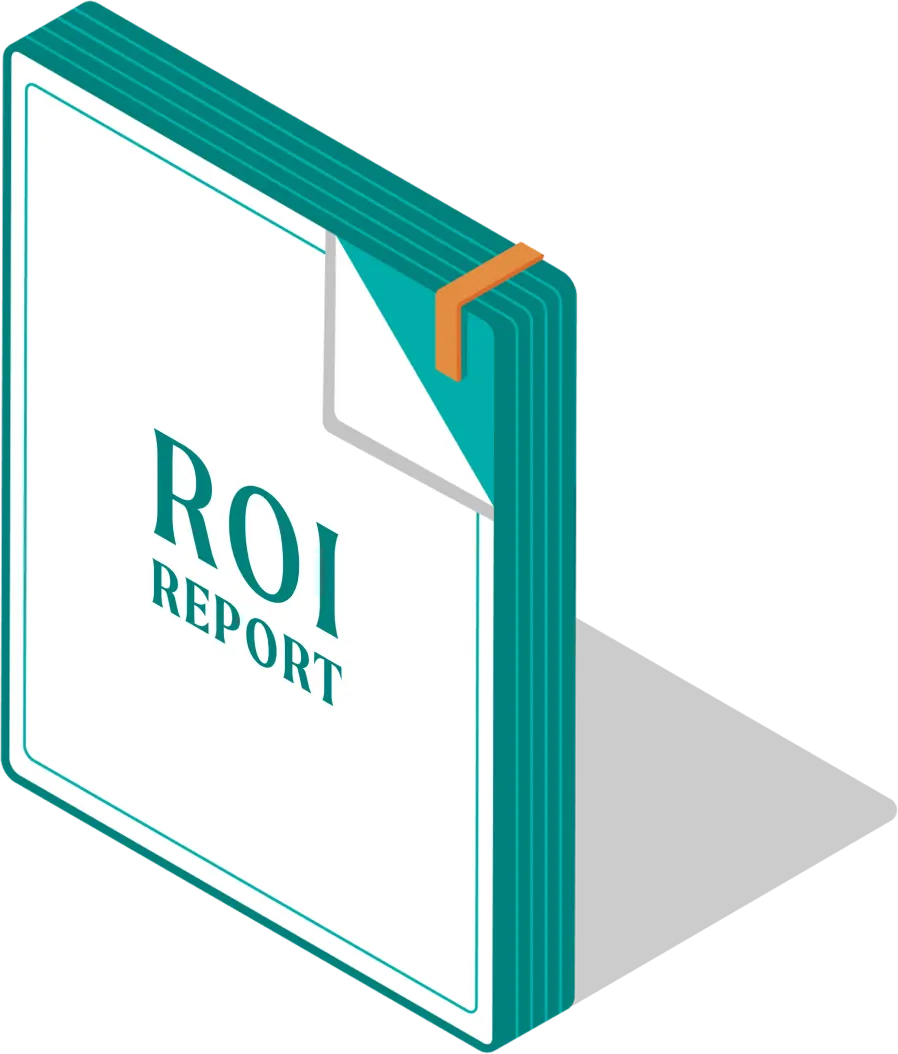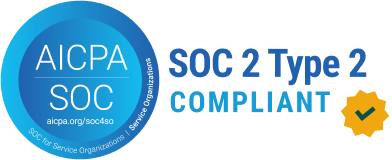The ROI of donor stewardship communications
A comparative analysis of traditional vs. digital reporting.
43.8%
Cost Reduction
Per report, switching from manual print processes to a streamlined digital platform.
2x
Higher ROI
Digital delivers a 1,238% net ROI compared to 596% for traditional, resource-heavy methods.
48%
Time Savings
Reduction in human hours by eliminating manual production, assembly, and shipping.
Executive summary
Personalized donor stewardship is a cornerstone of sustainable fundraising, yet the true cost and return of this critical activity have remained largely unquantified. This report provides comprehensive financial benchmarks for evaluating stewardship efficiency.
Key findings:
- Traditional Model: $141.52 per report with resource-intensive manual processes creating a “stewardship ceiling”
- Digital Model: $79.56 per report through Ovrture platform—a 43.8% cost savings
- ROI Impact: Digital approach delivers 1,238% 3-year net ROI vs. 596% for traditional methods
- Relationship Intelligence: Real-time analytics enable data-driven follow-up, documented to generate multimillion-dollar gifts
The strategic imperative of donor stewardship
High-touch stewardship is not a cost center; it is a high-yield investment in an organization's most valuable assets: its existing donors. The return is measured through two critical financial metrics:
Donor Retention Rate
The “north star” metric for donor relations. The nonprofit sector faces significant retention challenges, with overall rates at 40-50% and first-time donor retention as low as 18%.
Acquiring a new donor costs up to 5x more than retaining an existing one
Donor Lifetime Value
The gold standard for measuring long-term financial impact, representing total projected net contribution over time. Stewardship directly increases DLV.
Stewardship transforms one-time supporters into long-term philanthropic partners
Anatomy of a stewardship report
A phase-by-phase comparison of two workflows
Strategy, Data & Content Aggregation
Traditional method
Process begins 6-9 months pre-distribution with manual list curation, rigorous reviews by Major Gift Officers, and allocation of budgets for external vendors including writers, designers, photographers, and printers.
Digital method using Ovrture
Consolidated and accelerated process. CRM data acquired through spreadsheet upload or API integration. Digital assets gathered from institutional libraries and uploaded to centralized asset manager, eliminating siloed departmental requests.
Content Creation & Personalization
Traditional method
Complex, multi-departmental effort with manual data requests, story mining involving interviews and photoshoots, external writers, and multi-layered approval processes through program, finance, communications, MGOs, and executive leadership.
Digital method using Ovrture
Re-engineered for efficiency. Communications team creates library of reusable, modular Content Panels using pre-approved templates. Built-in AI assistant streamlines copywriting. Survey tool allows beneficiaries to provide stories directly. System automatically assembles hundreds of unique reports in bulk.
Production & Distribution
Traditional method
High-end physical production with bespoke design, commercial printing on premium paper with special finishes, manual proofing, hand assembly by staff, and shipping via premium carriers like FedEx or UPS with significant per-unit costs.
Digital method using Ovrture
Entire physical chain eliminated. Platform generates unique, secure URL for each donor’s report. Links distributed via email for all 1,000 donors in under two hours. Zero printing, assembly, or shipping costs.
Follow-Up & Relationship Intelligence
Traditional method
Coordinated but speculative. MGOs notified when reports ship and block calendars. Follow-up calls based on hope that donor received and reviewed report. Conversation begins with confirmation of receipt.
Digital method using Ovrture
Data-informed strategic conversations. Real-time analytics dashboard shows who opened reports, time spent viewing, and which content they engaged with most. MGOs tailor outreach with precision based on documented donor interests.
Total cost of investment
Head-to-head financial analysis (1,000 reports)
Traditional method
$141,520 / 1,430 hours
Total Investment (1,000 reports)
Per report:
Digital method using Ovrture
$79,560 / 738 hours
Total Investment (1,000 reports)
Per report:
Cost Savings:
43.8%
($61,960 saved per 1,000 reports)Key efficiency drivers
48%
Reduction in human hours
(1,430 → 738)
100%
Elimination of material and shipping costs
2–3x
More donors reached with same resources
Interactive ROI comparison
See how retention improvements impact your return
Donor retention improvement:
Traditional method
0%
3-Year Net ROI
Digital method using Ovrture
0%
3-Year Net ROI
Impact analysis:
With a 0-point improvement in donor retention, the digital method generates 0% more ROI than traditional methods due to its lower cost base and operational efficiency.
Beyond numbers: relationship intelligence
The digital platform generates a new form of value that traditional methods cannot replicate: real-time relationship intelligence that has led to directly attributable revenue.
$1.6M
One university client attributed $1.6 million in additional gifts following the distribution of 1,500 digital reports. The platform’s analytics revealed donor engagement patterns that informed strategic follow-up conversations.
$15M
Analytics revealed a major donor only watched videos. The team rebuilt his next proposal as a video-only experience and successfully closed a $15 million gift. This insight is impossible with traditional methods.
Strategic implications: shattering the stewardship ceiling
The traditional model’s $141.52 per-report cost is a rational investment proportional to major donor value. However, this creates an operational dilemma: heavy reliance on manual inputs and senior staff time makes it inherently unscalable, limiting personalized experiences to only the very top of the giving pyramid.
The digital model shatters this ceiling, enabling organizations to profitably engage crucial mid-level and emerging major donor segments—the donors who must be cultivated to become the next generation of philanthropists.
Accurately Budget for Stewardship
Create comprehensive budgets accounting for true, fully loaded costs of chosen methodology using $141.52 traditional baseline.
Justify Technology Investment
Use comparative ROI models to demonstrate to boards that digital platforms amplify stewardship returns, not expenses.
Evaluate Efficiency
Measure financial and operational gains of digital transformation against established benchmarks.
Scale Premier Experiences
Reach 2–3x more donors with same resources without degrading personalization quality.
From cost center to value creator
High-touch stewardship is essential to sophisticated, long-term development strategy. The digital platform model transforms the donor impact report from a static, expensive summary into a dynamic, cost-effective, and continuous asset for growth.
43.8%
Cost Reduction
1,238%
3-Year Net ROI
2–3x
Donor Reach
Ready to drive similar outcomes?
Get immediate access to see the quantifiable financial impact of digital-first donor relations.
Want to discuss how Ovrture can transform your stewardship program? Contact us at sales@ovrture.com

References & methodology
Primary Data Source: Ovrture Platform Operational Data & Client Implementation Intelligence (2017-2025). This analysis draws on eight years of proprietary data including documented client workflows, time-tracking data from implementations, post-implementation surveys, and direct observation of traditional stewardship processes during discovery and migration phases.
Industry Data Sources: Donor retention statistics from AFP Global’s Fundraising Effectiveness Project, Bloomerang donor retention studies, NextAfter research, and nonprofit salary benchmarks from ZipRecruiter, PayScale, and PNP Staffing Group (2024-2025).
Cost estimates, labor hour allocations, and efficiency comparisons represent aggregated patterns across client institutions. Client-specific success metrics have been independently verified and represent documented, attributable outcomes.
